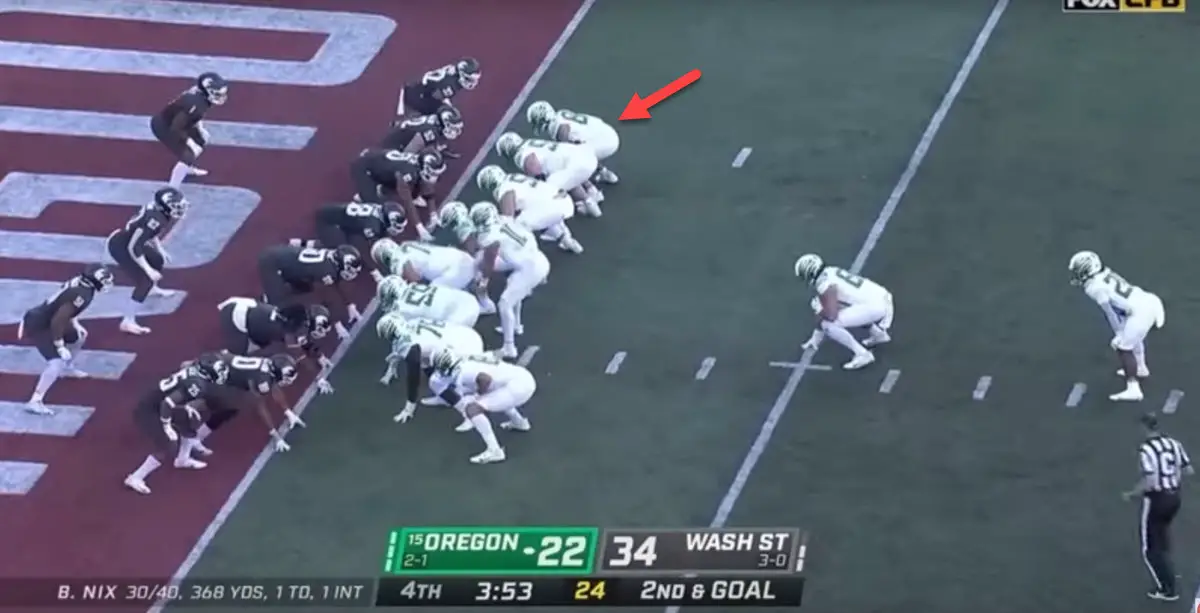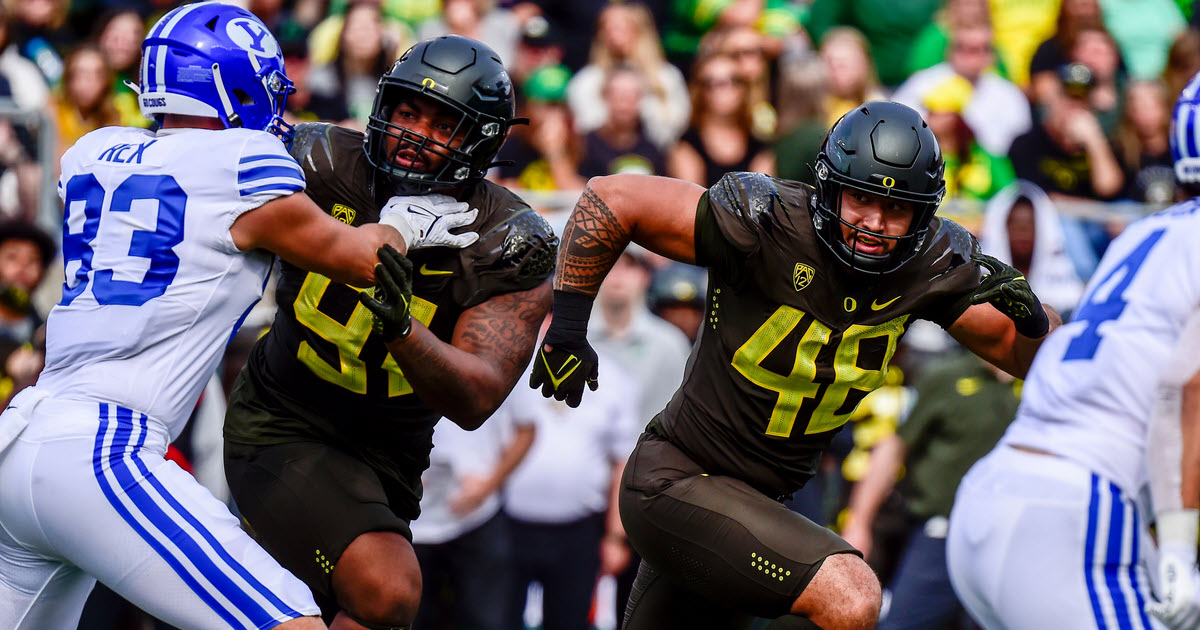As Oregon fans, we heard all about physicality from former HC Mario Cristobal over the last four years. Cristobal is gone now, and what we have seen over the past six weeks has been eye-opening in terms of what a physical team looks like. It used to be that the more physical team was simply the bigger team that could bully the opposing team off the line of scrimmage. That can still the be case, but football has changed greatly over the past 20 years and power is simply no longer enough.
To be the more physical team now requires testing the very limits of the opposing team’s athletes in terms of strength, speed, technique, and even football intellect. Dan Lanning, Kenny Dillingham and Tosh Lupoi are doing this week in and week out, and it is paying dividends. Lanning’s defense is evolving quickly with its disguised blitzes and pressure packages.
Meanwhile, Oregon’s offense has been dominant for the last five games, and on the season the Ducks are averaging 42 points per game. This stat does include the game against Georgia. Oregon’s offense is punishing their opponents all over the field and stressing them mentally and physically. But perhaps the most punishing area of the Oregon offense right now is in short yardage situations.
The formation that most embodies old school physicality is the jumbo formation that Oregon has been using at the goal line, or in other short yardage situations. During the Arizona game, the announcers referred to this formation as 14-J personnel, meaning one running back and four tight ends, and the J is supposed to stand for Josh Conerly as this jumbo formation is really to supposed to get him on the field.

Oregon lines up in the i-formation against BYU, using this formation for the first real time in over a decade.
This formation uses something that hasn’t been seen at Oregon since the Mike Bellotti era: a quarterback taking a snap from under center, followed by a half-back and the running back in the I-formation. This formation has become a nightmare to defend. We really started seeing this during the BYU game, where Oregon lined up in this formation and immediately did a quarterback sneak — and it was a success. It was used as a quarterback sneak formation for a few more short yardage situations.
The First Real Use Against BYU
By the end of the BYU game, the Cougars thought they had figured it out, and when Oregon lined up in this formation they crashed right down on the center of the offensive line to stop Bo Nix from gaining the yardage he needed, only for Nix to hand off the ball to a running back who easily carried it for a first down.
Talk about physicality — Oregon started by using a big formation to bully BYU off the ball (and succeeded), and by the time BYU countered, Dillingham had next-leveled them and tweaked the play. Oregon simply outsmarted BYU and Oregon’s athletes used their power and their athleticism to not give them a chance to make a stop.
The Second Evolution
The next evolution of the Jumbo formation came a week later against Washington State. These Cougars had done their homework and did a fantastic job throwing all their personnel at the line of scrimmage and using their linebackers to sit back and fill the gaps that were going to emerge. Oregon’s offensive line was going to open a hole because they were just stronger than Washington State’s defensive line, but the linebackers were able to clog the holes.

Cam McCormick, the red arrow, is going to score a touchdown by sneaking behind the WSU defensive front.
Then in the fourth quarter, Dillingham takes this same formation and makes one more change — a tight end acts like he is going to block, and then slips past the defensive line, getting wide open and opening an easy touchdown pass for Nix. Washington State and all other future teams learned they can’t just charge down hill to stop this formation; they are going to need to ensure they cover whoever tries to slip behind them.
A Further Wrinkle
Against Arizona, Dillingham added another wrinkle. This time a tight end started moving across the formation at the snap, as if pulling for a block, and instead of handing the ball off to the running back, Nix handed the ball off to this motioning tight end. The result, an easy score.
How is any defense supposed to stop this play?
It would require a full team effort. The defensive line is going to have to attack the center of the formation and maintain integrity at the line of scrimmage, though that is easier said than done considering Oregon has one of the best offensive lines

Moliki Matavoa, the red arrow, is in motion before the snap and he will receive the hand off to score the touchdown.
Even then, Nix has shown he can get his head up and bounce to an edge to get in. The linebackers and the secondary will have to fill any gaps that open up while also maintaining coverage on anyone who tries to sneak into the backfield, and now they even have to make sure they have a body on anyone who goes into motion across the formation.
And then they need to get the stop.
This is a physical and mental nightmare, and this is just one formation designed to address short yardage situations. Oregon has a whole array of formations for the open field and has so far proven they can move the ball at will on open field.
Mental mistakes from an opposing defense can lead to just as big of offense gains as a perfectly designed and executed play. This enables Oregon’s offensive line to make big holes for Oregon’s runners, it gives Nix a clean pocket, and it makes everyone look good.
Everyone is more effective when scheme and physicality mesh, and that is what it means to be a physical team in the modern era of football.
David Marsh
Portland, Oregon
Top Photo By Eugene Johnson

Natalie Liebhaber, the FishDuck.com Volunteer Editor for this article, works in the financial technology industry in SLC, Utah.
Related Articles:

David Marsh is a high school social studies teacher in Portland, Oregon. As a teacher he is known for telling puns to his students who sometimes laugh out of sympathy, and being both eccentric about history and the Ducks.
David graduated from the University of Oregon in 2012 with Majors in: Medieval Studies, Religious Studies, and Geography. David began following Ducks Football after being in a car accident in 2012; finding football something new and exciting to learn about during this difficult time in his life. Now, he cannot see life without Oregon football.


